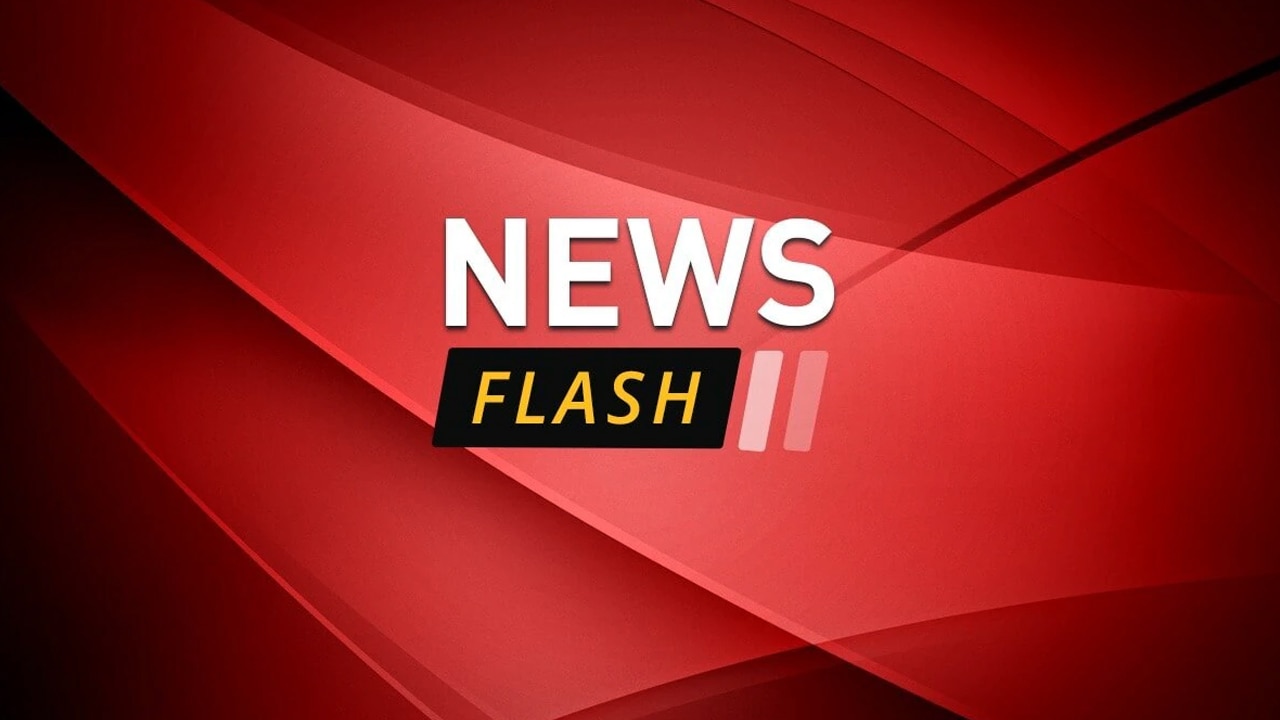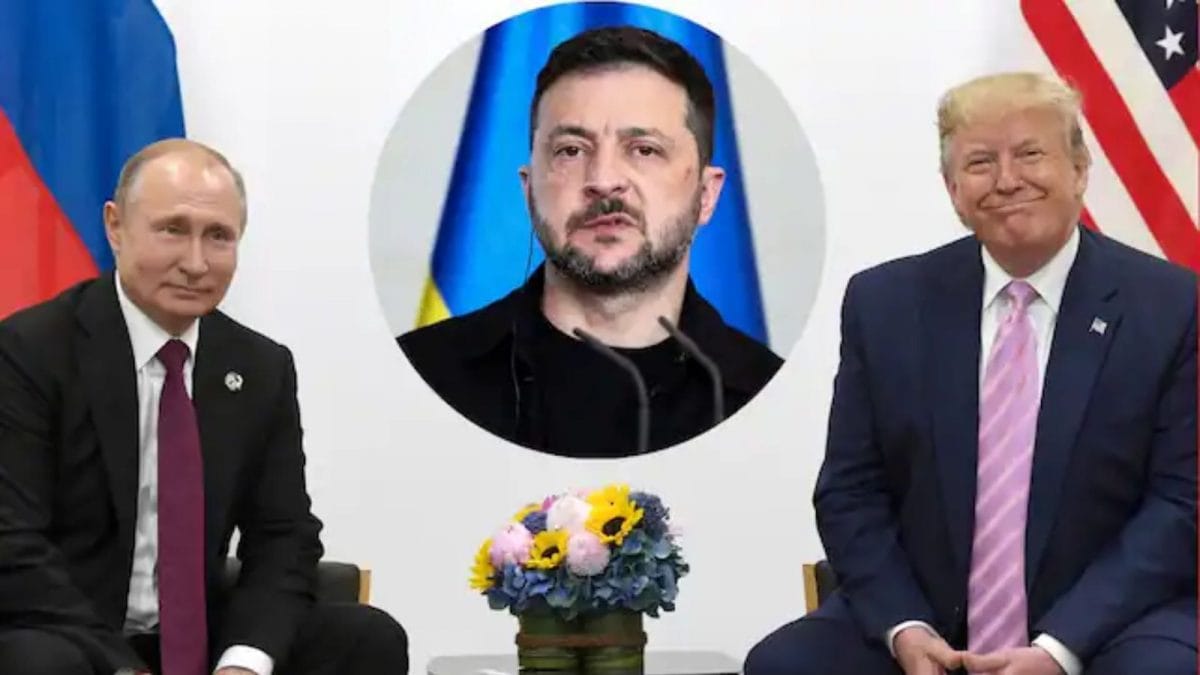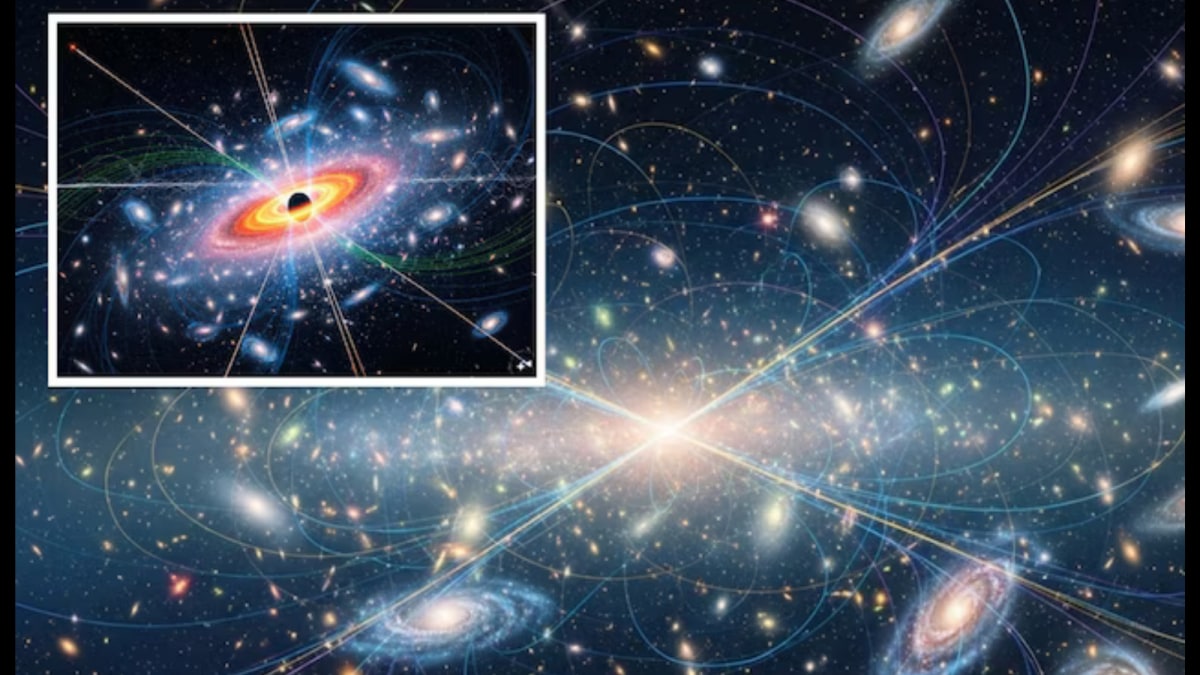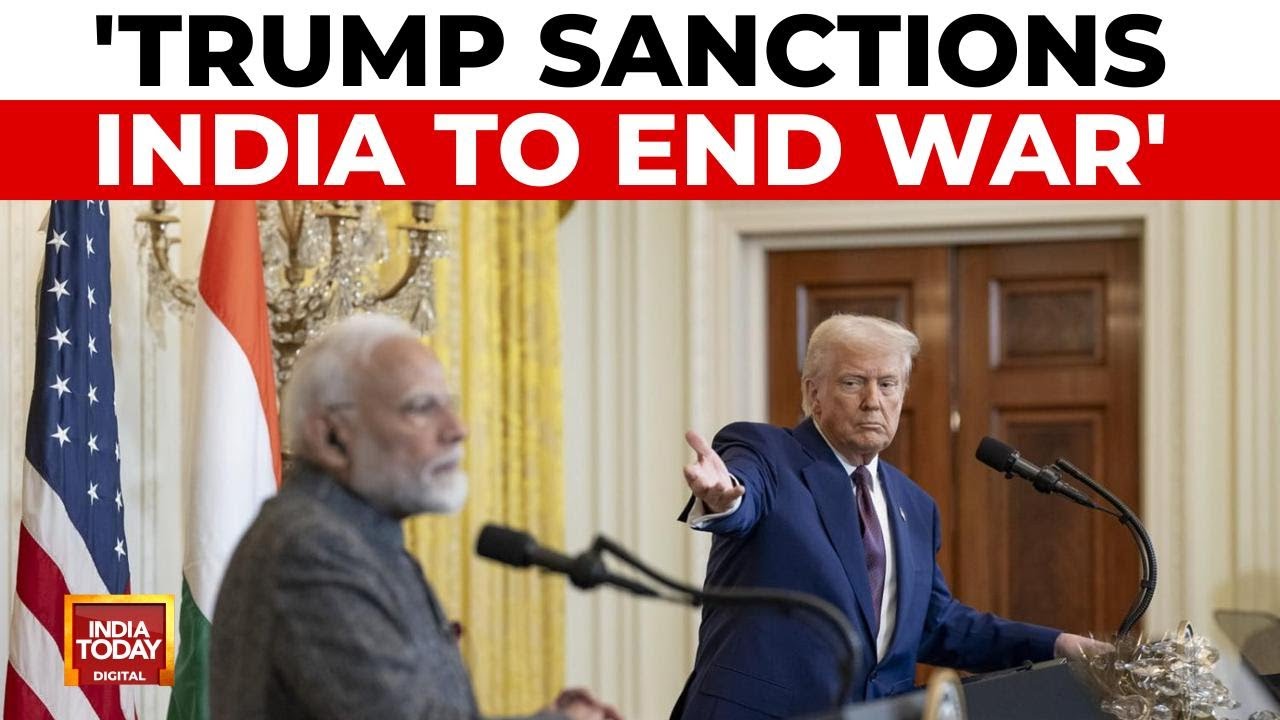Chinese Foreign Minister Wang Yi was in India for talks to shore up ties after a difficult phase in relations marked by border clashes. Wang met PM Narendra Modi ahead of his China visit after seven years. Though the meetings come amid Trump's tariff turbulence, they are part of a process, not a sudden swing. This is how the two sides worked to mend ties, with pragmatism as the pivot.

After PM Modi's China visit in 2018, he hosted Chinese President Xi Jinping in Mamallapuram, Tamil Nadu, in October 2019. (Image: X/PMO)
Is there a sudden bonhomie between India and China? The flurry of activities amid US President Donald Trump's tariff tornado might make one believe so, but what is being perceived as a thaw in ties is a part of the process Delhi and Beijing have engaged in since the 2017 Doklam crisis and the 2021 Galwan military conflict. It is not a sudden swing. That's how diplomacy works—deep and silent.
The temptation to see these meetings as dramatic shifts misses the longer trajectory of India-China relations.
As Chinese Foreign Minister Wang Yi, on a two-day India visit, put it: Ties are now on a "positive trend" toward cooperation. External Affairs Minister S Jaishankar acknowledged that both sides are seeking to move forward from a "difficult period".
Even as the two sides work to better ties, the trouble on the borders because of China's expansionist posture remains a sore point. While China has been insisting on dialogue, for India the border issue is on the priority list for talks. However, there is a sense of pragmatism too with a change in the geopolitical scenario.
"Discussing border issues is very important because the basis for any positive momentum in our ties is the ability to jointly maintain peace and tranquillity in the border areas. It is also essential that the de-escalation process moves forward," Jaishankar said on Tuesday. The Chinese side agreed that it was an "important issue".
Wang Yi's visit comes even as Prime Minister Narendra Modi is slated to visit China for the SCO summit later this month after a seven-year gap. On Tuesday, Wang Yi met PM Modi after the former's series of high-level talks in New Delhi, as both Asian giants work towards stabilising and strengthening ties.
The recent visits and talks come at a time when US-India relations are strained, after the Trump administration earlier this month doubled tariffs on Indian goods to 50%, citing New Delhi's continued imports of Russian crude.
While many believe this thaw is a reaction to President Trump's tariff storm that has hit India, the reality is more layered. The cautious reset in ties is rooted in the post-Doklam process, tested by the Galwan crisis of 2020-2021, and carried forward through years of quiet disengagement and diplomacy.
Trump's tariffs have only added urgency, not created the moment.
"India has been in talks with China even during the military tensions on the border. We keep channels open and refrain from loose talk. So let's not frame this as India making a knee-jerk reaction to move closer to China, in the wake of the current confrontational approach of the American government. The current meetings are part of that process," Rohit Lal, a Foreign Policy analyst, wrote on X.
Lal was commenting on a post by Time magazine, which framed the India-China talks as a result of Trump's tariffs.
A LONG-DRAWN PROCESS AND NOT A SUDDEN DEVELOPMENT
Sino-Indian ties received a jolt in 2017 after the Doklam standoff. Indian and Chinese troops faced off, in an eyeball-to-eyeball confrontation, for over two months near the tri-junction with Bhutan. The standoff ended without shots being fired but left scars and forced both New Delhi and Beijing to recognise the risks of unchecked escalation.
In response, PM Modi and Chinese President Xi Jinping met in Wuhan in 2018 for the first "informal summit", setting a new template of quiet, leader-driven dialogue with few announcements but strong signalling. In 2019, Modi hosted Xi at Mammalapuram in Tamil Nadu.
However, the reset was tested soon enough.
In May 2020, soldiers from the two countries clashed in eastern Ladakh's Galwan Valley. This was the first deadly confrontation between Indian and Chinese soldiers in 45 years, and left 20 Indian and reportedly four Chinese soldiers dead. However, some reports said the Chinese casualties were over 40.
Bilateral relations plunged to their lowest point since the 1962 War.
India retaliated with bans on Chinese apps and tighter investment scrutiny, while Beijing curtailed people-to-people exchanges.
EXPERTS ON IMPORTANCE OF BACKCHANNEL DIPLOMACY
Yet, military-level talks and backchannel diplomacy persisted between New Delhi and Beijing.
"On the one hand, it [India] confronted the Chinese at the blockade points and also amassed troops on the border, signifying a defensive rather than offensive intent. On the other hand, it pressed Beijing through firm and steady diplomacy to roll back its action," Manoj Joshi, a Distinguished Fellow at the ORF, noted in an October 2024 piece.
India and China, all through the diplomatic chill, used multilateral platforms like Brics and the Shanghai Cooperation Organisation (SCO) offered "the chance to deploy nimble diplomacy", according to ORF fellows, Harsh V Pant, and Kalpit A Mankikar's 2025 Open Magazine piece.
Last year, in October 2024, when the SCO Summit was held in Pakistan, S Jaishankar also attended the event.
Indian foreign and defence ministers and officials engaged with their counterparts where they achieved the resolution of some friction points.
Buffer zones were also created along the LAC.
"Institutional frameworks like the Working Mechanism for Cooperation and Coordination were pressed into action; as a result, diplomatic corps met on 17 occasions since the start of the crisis...," noted Pant and Mankikar.
"While troops on both sides of the border were engaged in an eyeball-to-eyeball confrontation, military commanders did not take their eyes off the ball to meet for talks in 21 rounds," the duo added.
INDIA-CHINA TIES FROM GALWAN CLASH TO NOW
Following the May 2020 Galwan Valley clash, India and China initiated cautious, phased disengagement to de-escalate tensions along the LAC.
The first such step came in February 2021 at Pangong Tso, where both sides completed troop withdrawal from forward positions on both banks.
A further move occurred in September 2022 at Gogra-Hot Springs, specifically at Patrolling Point 15 (PP-15), where troops began coordinated pullback and dismantled temporary structures.
Though incremental, these steps played a strategic role in preventing the border standoff from becoming a permanent fixture.
In February 2023, India and China held their first in-person Working Mechanism for Consultation and Coordination on India-China Border Affairs (WMCC) meeting since 2019 in Beijing, discussing disengagement at remaining LAC friction points and planning the next Senior Commanders' talks.
Meanwhile, India progressed with frontier infrastructure, developing border villages under the Vibrant Villages Programme and advancing roads like Darbuk–Shyok–DBO, including new tunnel plans.
By October 2024, the groundwork for a bigger step was in place.
On the sidelines of the Brics summit in Kazan, Modi and President Xi Jinping signed a border patrolling pact, the first significant border management agreement since Galwan. Limited in scope but vital in signalling intent, it aimed to reduce clashes during patrols.
Since then, ties have moved gradually. Direct flights resumed in January 2025, and after six years, Indian pilgrims regained access to Kailash Mansarovar Yatra.
In June, Defence Minister Rajnath Singh visited Qingdao, the first Indian defence minister to visit China in over a decade. He called for a "structured roadmap of permanent engagement and de-escalation."
INDIA'S CAUTION AFTER CHINA ROLE IN OP SINDOOR
Still, caution remains.
Operation Sindoor recently highlighted the depth of the China-Pakistan military nexus, a reminder that trust has limits and New Delhi must hedge its bets even while engaging Beijing. Both countries are also moving ahead on military intelligence sharing, through CENTIAC, a China-backed AI and computing centre in Pakistan.
Public sentiment in India, too, remains not too positive towards China, amid the cautious handshakes.
Symbolism has also accompanied pragmatism.
Earlier this year, President Xi Jinping called for relations to resemble a "dragon-elephant tango".
Yet behind the diplomatic push, China continues to fortify the frontier with new roads, rail networks and even villages that double as military support bases.
The rivalry stretches into the Indian Ocean as well, a vital waterway for Beijing's Belt and Road Initiative, which seeks to secure supply chains and extend China's global reach.
For Beijing, one of the biggest drivers of mistrust was the suspicion that India is abandoning its traditional nonaligned posture and edging closer to Washington.
That came with India's role in the Quad — alongside the US, Japan and Australia — which China views as a grouping designed to counter its rise.
But the Trump tariffs and India's digging in heels take care of that concern, for now.
ECONOMIC REALITIES ALSO WEIGH HEAVILY
Economic realities also hold significance.
India remains a vast market for Chinese goods and depends on critical imports such as electronics, machinery, chemicals, and rare earths.
China, meanwhile, values India as both a partner and a market, especially as Trump’s US doubles tariffs on Indian goods, including penalties linked to Russian oil purchases.
The rupture has strained years of growing US-India alignment in technology and security, giving Beijing room to manoeuvre.
As Manoj Kewalramani of the Takshashila Institution told the New York Times, there is "a certain amount of schadenfreude" in Beijing, as a breakdown of India-US trust serves China's interests.
Russia, too, has sensed an opportunity. Moscow is pushing to revive the Russia-India-China (RIC) troika, which stalled after Galwan and the pandemic.
Both Beijing and New Delhi now appear more open to the idea.
Foreign Ministry spokesperson Lin Jian backed RIC as serving the "peace, security, stability and progress" of the region, while Russian officials said negotiations are underway to resume cooperation.
Moscow sees this as part of building a "multipolar architecture", a thinly veiled reference to countering US dominance.
What looks like sudden bonhomie is, in reality, the outcome of a long and silent diplomatic work, pragmatism, and crisis management. Trump's tariff shouldn't get all the tareef.
- Ends
Published By:
Priyanjali Narayan
Published On:
Aug 20, 2025
Tune In

 2 hours ago
2 hours ago








